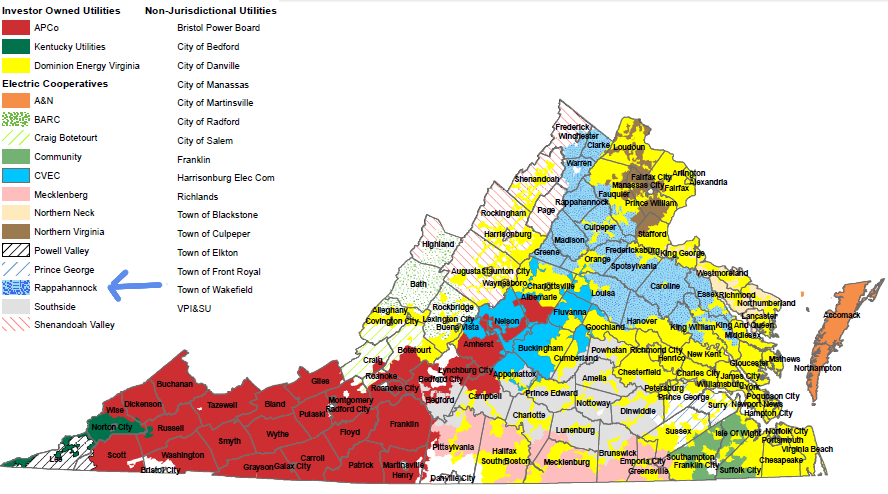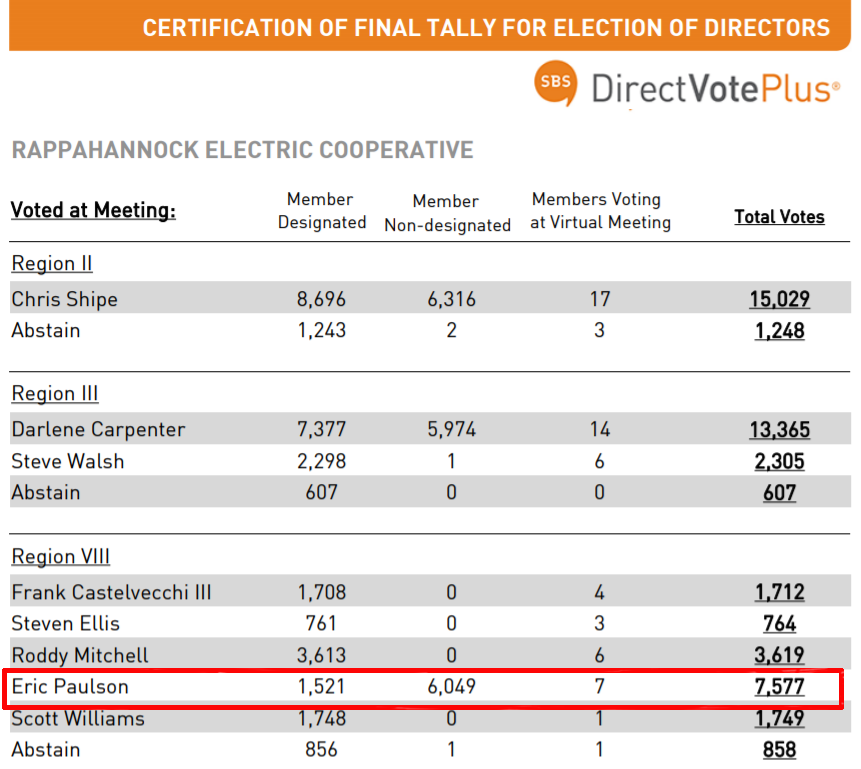
the Rappahannock Electric Cooperative has the largest service territory of the 13 electricity co-ops in Virginia
Source: State Corporation Commission (SCC), Electric Service Territories

the Rappahannock Electric Cooperative has the largest service territory of the 13 electricity co-ops in Virginia
Source: State Corporation Commission (SCC), Electric Service Territories
Residents in Carolina, Spotsylvania, and Hanover counties formed a nonprofit company called the Farmers Rural Utilities in 1935. At the time, 1.8& of Spotsylvania farmers and 0.6% of Caroline County farmers had access to electricity. Water pumps, milking machines, and other farm equipment was operated by hand or by engines fueled with gasoline. Lights in barns and houses were based on kerosene. Firewood kept people warm in the winter.
After the Virginia General Assembly changed state laws to authorize electric cooperatives, Farmers Rural Utilities was rechartered as the Virginia Electric Cooperative in 1938.
That same year, residents of Culpeper, Madison, Orange, Greene, and Rappahannock counties organized the Northern Piedmont Electric Cooperative. After the energy crises in the 1970's, the two small cooperatives recognized they could increase buying power and reduce business vulnerabilities by consolidating. Virginia Electric Cooperative and Northern Piedmont Electric Cooperative merged into the Rappahannock Electric Cooperative, which began operations in 1980.1
Like the other 12 electric cooperatives in Virginia, the Rappahannock Electric Cooperative is government by a Board of Directors elected by the members of the cooperative. Every customer paying for electricity is a member.
In 2018, a dispute between members organized as "Repower REC" and the nine-member board triggered publicity. The board had declined to allow members to attend official board meetings, or to reveal the individual payments made to members serving on the board. In general, board members were paid $2,000 per month and $500 per diem for attending official meetings and doing work for the co-op. Compensation in 2017 ranged between $13,500-$48,950, so some members were more active than others, but no further details were provided.
After failing to get a satisfactory response from the board, the Repower REC group petitioned the State Corporation Commission to modify the co-op's bylaws and force greater transparency. The board had refused to allow co-op members to attend or observe board of directors meetings, and declined to disclose the total compensation paid annually to each board member.2
In response, the co-op's board began posting financial statements and tax returns, regularly revealing annual compensation of board members. It also publicized minutes of its meetings.3
In the 2021 election, the members of the cooperative clearly supported one candidate for the Region VIII position on the board. However, the board has the authority to allocate undesignated proxies to the candidate(s) of its choice. It chose to cast all the proxies for a different candidate, who had finished fourth in a five-person race.
A disgruntled member commented on the results:4

proxy votes cast by the board of the Rappahannock Electric Cooperative ensured election of one candidate in 2021
Source: Rappahannock Electric Cooperative, Certification of Final Tally For Election of Directors